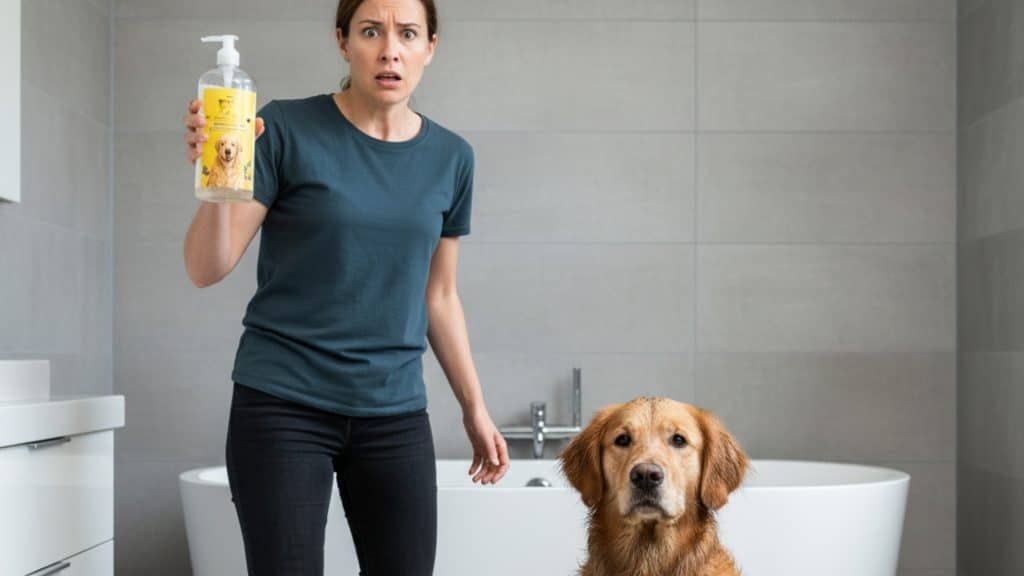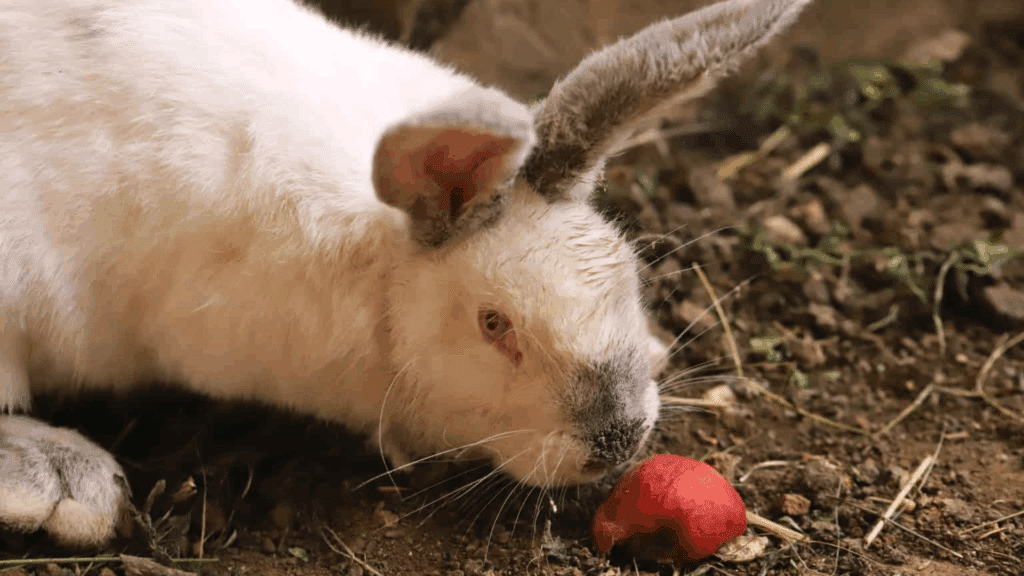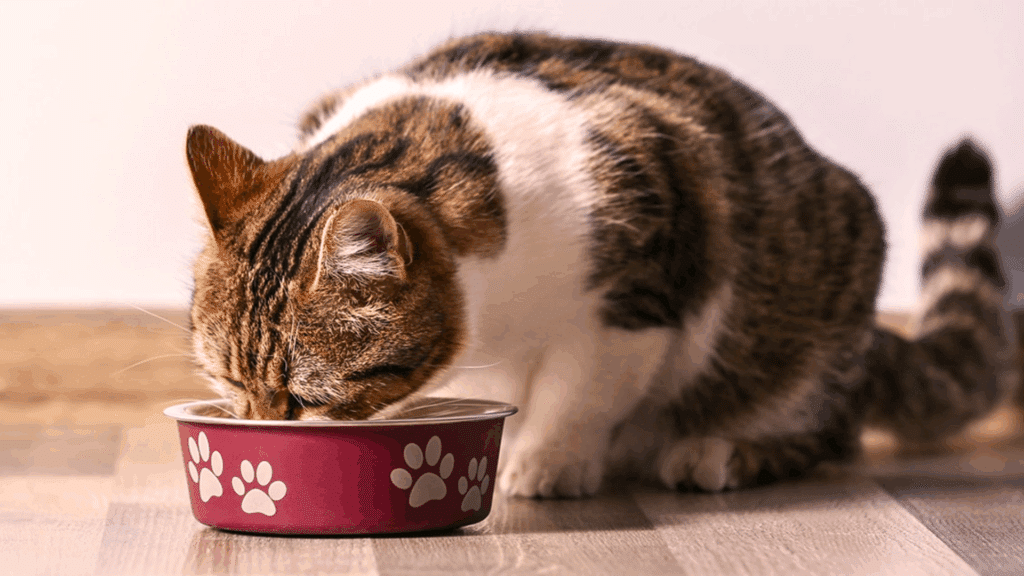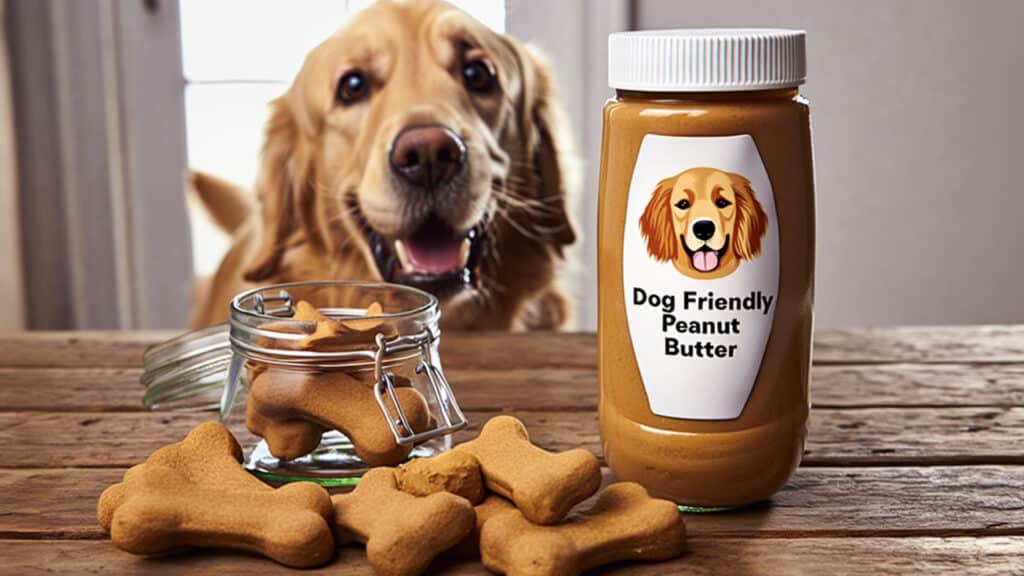You come home from the park, and your dog is muddy but excited for a nice bath. He runs happily toward the bathroom, wagging his tail in excitement.
But when you reach for his shampoo, you find the bottle completely empty. Suddenly, you start to panic and don’t know what to do.
I’ve been in that same situation before, and even my dog looked at me like he knew something was wrong.
I called a friend, and he told me about a simple homemade recipe that worked perfectly.
Since then, I have always kept an extra dog shampoo handy. I’m writing this guide so you don’t face that same trouble.
I’ll share safe, easy alternatives you can use temporarily when you run out of dog shampoo.
Why Are Dog Shampoos Made Differently?
Dog shampoos are made differently because a dog’s skin is not the same as human skin. Our skin is slightly acidic (4.5-6 pH), while a dog’s skin is more neutral or alkaline (5.5- 7.5 pH).
If you use human shampoo on your dog, it can upset the natural balance of their skin.
This can remove the protective oils that keep their coat soft and healthy, leading to dryness, itching, or even infections that make them very uncomfortable.
Dog shampoos are formulated to match a dog’s natural skin pH and utilize gentle ingredients specifically designed for their coat and sensitivity.
Many also have extra conditioners that help keep the fur smooth and moisturized.
That’s why it’s important to pick the right shampoo and wash your dog carefully for their comfort and health.
Best Household Alternatives to Dog Shampoo
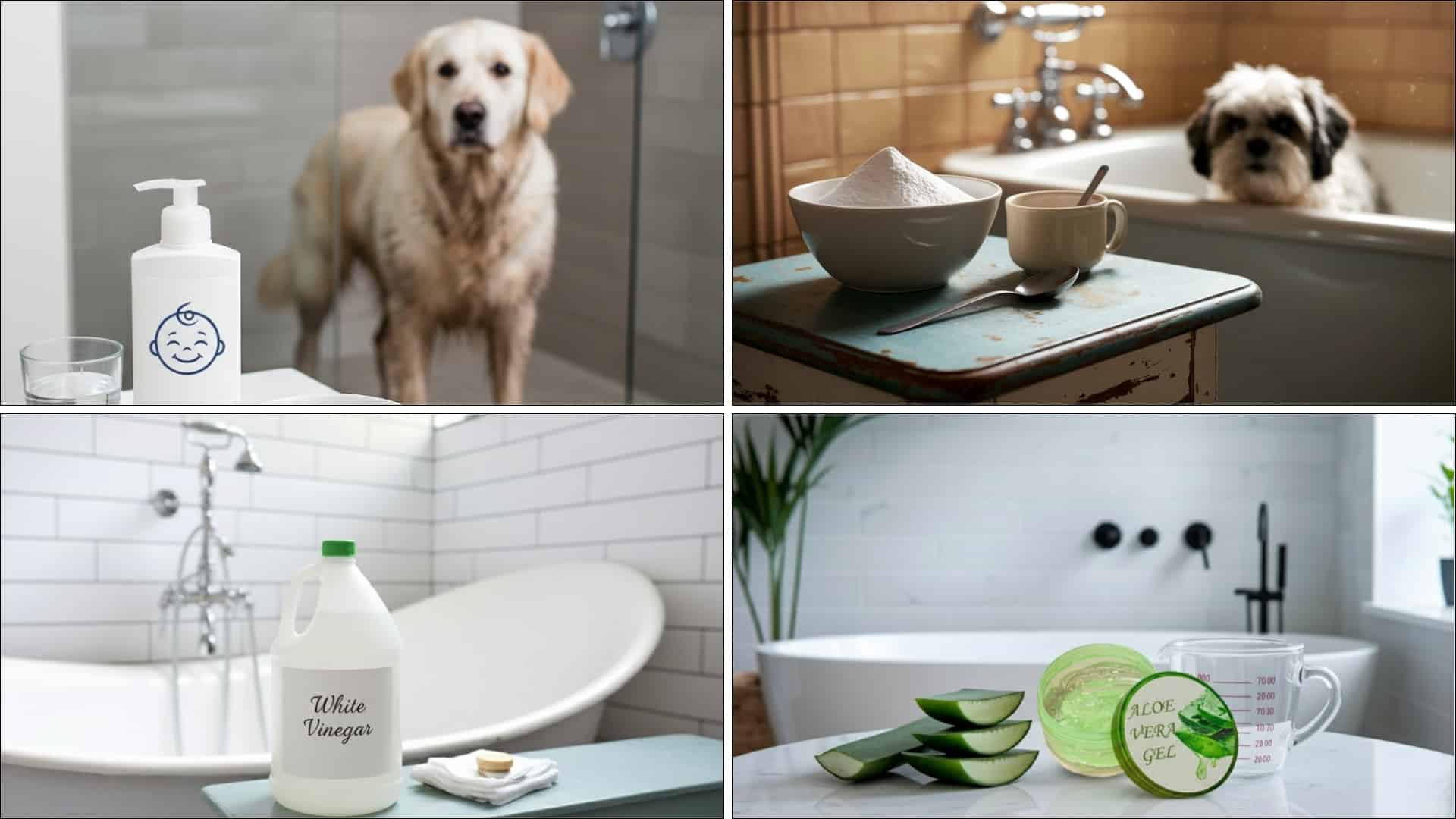
Don’t worry if you ran out of your dog shampoo. You can try the alternatives below that are safe to use in emergencies when used correctly.
1. Mild Baby Shampoo
Mix a small amount of fragrance-free, hypoallergenic baby shampoo with plenty of water to dilute it well before applying.
Gently massage it into your dog’s wet coat, then rinse thoroughly to prevent irritation.
Make sure it’s free from dyes or harsh chemicals that can dry the skin. Use only in emergencies and never on open wounds.
2. Oatmeal Rinse
Grind plain oatmeal into a fine powder and mix it with warm water until a smooth, milky texture forms.
Pour it over your dog’s coat and rub gently before rinsing. Oatmeal naturally soothes itching, dryness, and irritation.
Always rinse thoroughly to prevent any residue from making the coat sticky or dull afterward.
3. Baking Soda Paste
Mix baking soda with water until a soft paste forms. Apply gently on your dog’s damp coat and massage it evenly to absorb odor and dirt.
Avoid using too much or leaving it for too long.
Rinse thoroughly to prevent dryness, as baking soda can sometimes irritate sensitive skin if not completely removed.
4. Diluted White Vinegar Rinse
Combine one part white vinegar with three parts water and use it as a final rinse after washing your dog.
It helps neutralize odors and balance skin pH.
Avoid using it on cuts or broken skin, as vinegar can sting. Rinse thoroughly afterward to prevent dryness or any lingering smell.
5. Castile Soap
Dilute Castile soap with plenty of water before applying it gently over your dog’s coat.
It’s plant-based and free of harsh chemicals, making it safe for short use. Lather lightly, then rinse thoroughly to ensure no soap residue remains.
Avoid contact with the eyes, ears, and mouth during washing to prevent irritation.
6. Coconut Oil Wash
Blend a small amount of pure coconut oil with warm water to make a gentle, moisturizing wash.
Rub it into the coat evenly and let it rest for a few minutes. Rinse very well to avoid a greasy feel afterward.
This wash helps soften fur and supports healthy skin, particularly for dogs with dry coats.
7. Aloe Vera Gel with Water
Mix pure aloe vera gel with water to create a cooling, soothing wash.
Apply evenly and rinse thoroughly after a few minutes. Aloe vera helps calm redness, dryness, and irritation. Avoid flavored or chemical-added gels.
Always use pure aloe to protect sensitive skin and prevent sticky residue after drying.
8. Green Tea Rinse
Brew green tea and let it cool before pouring it evenly over your dog’s coat.
Massage gently for 1 minute to allow the antioxidants to work, then rinse thoroughly. Green tea helps soothe skin and adds a mild freshness.
Ensure the tea is completely cooled and unsweetened before using it for safety.
9. Cornstarch Powder Bath
Sprinkle plain cornstarch powder over your dog’s dry coat and gently rub it in to absorb dirt and oil.
Let it sit for a minute before brushing it out completely. This is a quick, waterless option that helps freshen up the coat.
Avoid inhalation and remove all powder to prevent buildup on the skin.
These alternatives are only for temporary or emergency use. Always use a vet-approved dog shampoo for regular baths. Excessive use of these materials may cause skin dryness or damage.
Common Myths About Washing Dogs Without Dog Shampoo
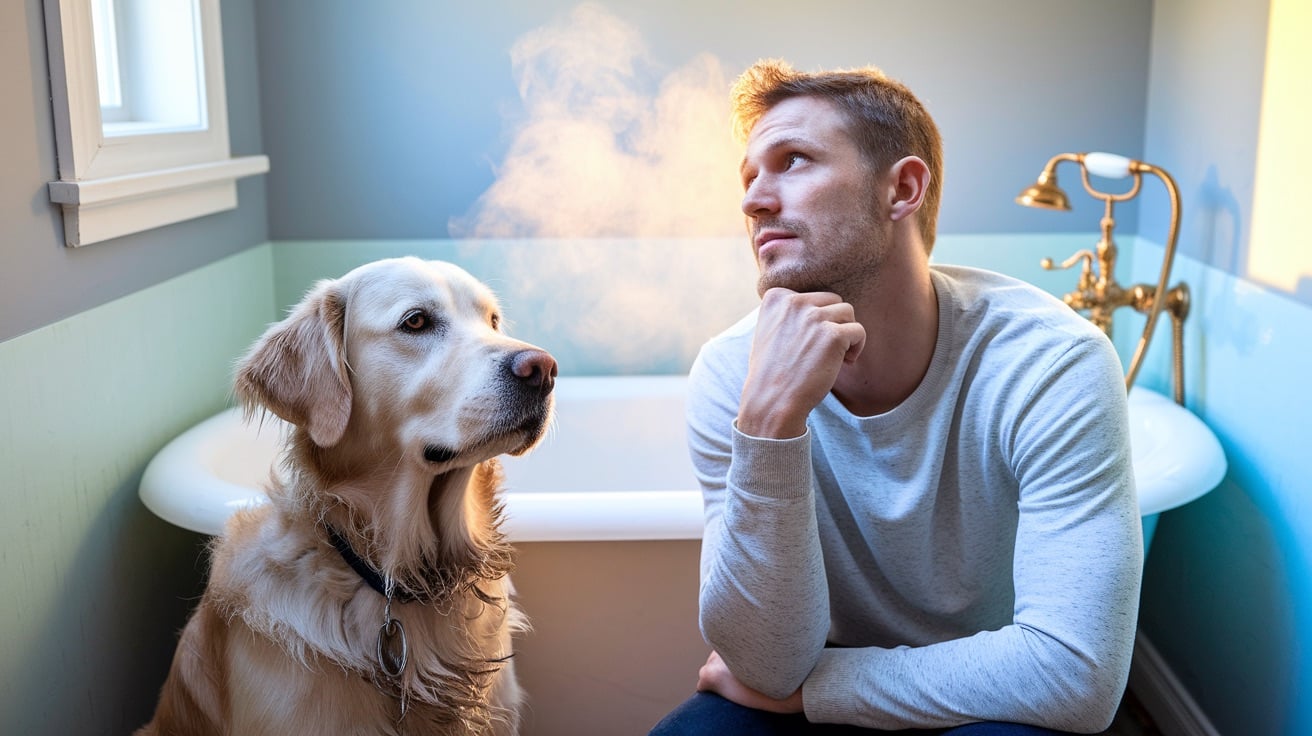
Sometimes, you might hear people share all kinds of advice about washing dogs without using proper dog shampoo.
Let’s clear up some of the most common myths so you can make safe choices for your furry friend.
Myth 1: Human Shampoo is Safe if Adjusted to Neutral pH
Fact: Even if you adjust the pH, human shampoo still contains harsh detergents and fragrances that can damage a dog’s sensitive skin and remove natural oils.
Myth 2: Using Shampoos for Other Animals is Fine
Fact: Each animal’s skin has different needs. Shampoos made for cats, horses, or other pets can cause dryness, irritation, or even allergic reactions in dogs.
Myth 3: Top Brand Soaps Are Safe for Dog Baths
Fact: Expensive or well-known soaps are not designed for dogs. Many contain strong cleaning agents that can irritate or inflame your dog’s skin over time.
Myth 4: Homemade Shampoo is Always Better than Commercial Products
Fact: Homemade mixes can be risky if ingredients are not balanced or too strong. Some natural items can still harm your dog’s coat and skin barrier.
Myth 5: Frequent Washing with Any Product Has No Consequences
Fact: Bathing too often, even with gentle products, can remove the oils that protect your dog’s skin. This can lead to itching, redness, and dryness.
So, the next time someone suggests using random household items or other shampoos for your dog, you’ll know the truth and can keep your pet’s skin healthy.
How to Safely Wash Your Dog?
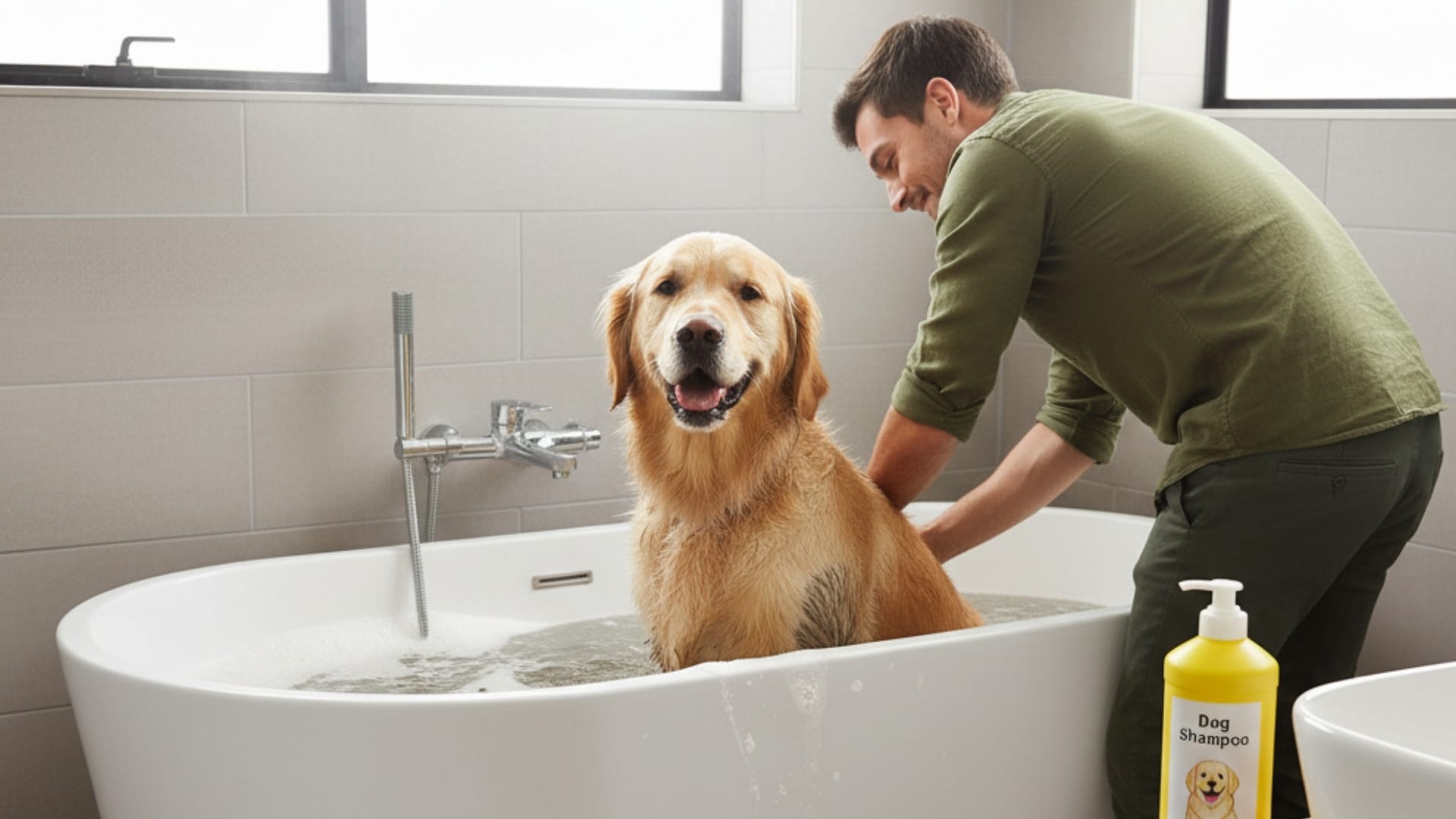
Whether you have dog shampoo or not, you can still make bath time safe and comfortable by following these simple and gentle steps.
- Start by brushing your dog’s coat to remove loose dirt, tangles, and mats before wetting them completely.
- Use lukewarm water that feels comfortable on your wrist to soak your dog’s coat evenly.
- Apply your chosen product, whether it’s dog shampoo or a safe alternative, such as diluted baby shampoo or an oatmeal rinse.
- Massage it gently through the fur, rather than scrubbing hard, which could irritate the skin or pull the hair.
- Rinse thoroughly until no product remains, as leftover residue can cause dry or itchy skin in your dog later.
- Pat your dog dry with a clean towel, avoiding hot air dryers that might cause discomfort or irritation.
- If you have no safe shampoo or substitute, rinsing with plain water is still a better option than using harsh soaps.
Whether you use shampoo or a quick alternative, being gentle helps keep your dog’s skin healthy, soft, and clean until the next proper wash.
When to Avoid Using Alternatives and Seek Professional Help?
Sometimes, using home alternatives or temporary washes is fine, but there are times when you should stop and get help from a vet instead.
Watch closely for warning signs that your dog’s skin needs professional care.
These signs can tell you it’s time to stop using home treatments and book a vet visit right away:
- Persistent itching or scratching.
- Red, inflamed, or bleeding skin.
- Hair loss or bald patches.
- Unusual odors or discharge from the skin.
- Excessive licking or chewing of affected areas.
If your dog seems uncomfortable or their skin looks unhealthy, it’s better to avoid guessing and seek professional advice.
A vet can diagnose the issue and recommend the appropriate treatment and shampoo. Using random remedies without understanding the root cause may worsen the issue and delay healing.
Tips for Choosing the Right Dog Shampoo

Now that you have managed your dog’s bath using temporary alternatives, it’s time to think ahead. The next time you buy a dog shampoo, remember these key factors to make a smart and safe choice:
- Choose a shampoo specifically formulated for dogs with a pH level between 6.2 and 7.4 to maintain their natural skin balance.
- Consider your dog’s breed and coat type, as some require moisturizing formulas while others need hypoallergenic or medicated options.
- Check ingredient lists carefully and avoid shampoos that contain sulfates, parabens, or artificial fragrances that may irritate the skin.
- Read product reviews and vet recommendations to understand which brands are most trusted for safety and effectiveness.
- Compare prices, but always prioritize quality and safety over low cost when it comes to your pet’s skin care.
- Choose eco-friendly or natural formulations that are gentle on sensitive skin and safe for the environment.
Making an informed choice helps your dog stay clean, comfortable, and healthy while maintaining their coat’s shine and strength for the long term.
Conclusion
Bathing your dog without dog shampoo can be stressful, especially when you want them to be clean and comfortable but have no suitable products on hand.
Still, with the right care and gentle alternatives, you can safely manage until you get a proper dog shampoo again.
Always remember that homemade or quick options should only be temporary, as your dog’s skin needs products specifically formulated for its pH and sensitivity.
Keeping your pet’s coat healthy is about using the right shampoo, bathing schedule, and gentle approach each time.
So, always plan ahead and store an extra bottle of your dog’s shampoo to avoid last-minute worries during bath time.
Have you ever tried washing your dog when you ran out of shampoo? Tell us what worked best for you, and share your experience in the comments below.


